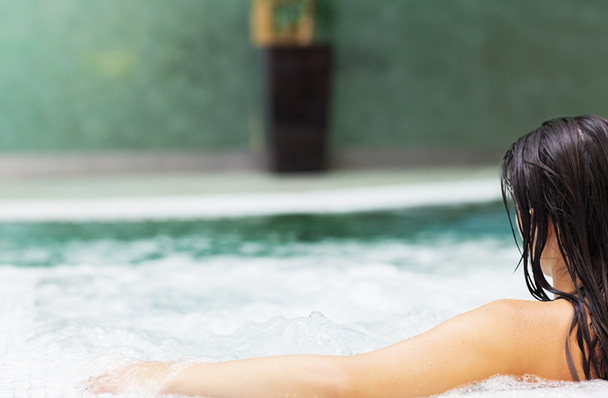Are you planning on hitting the local spa to soak in the hot tub and get rid of stress? Be careful because it’s something that can put you at risk of the so-called hot tub rash. Also sometimes known as hot tub folliculitis, it’s a bacterial infection of the hair follicles, causing the formation of red bumps that look like pimples or acne.
You may think that a skin infection is unlikely to happen because water in a hot tub is hot, and we all know that bacteria do not like high temperatures. Well, there are a couple of reasons why hot tub rash may strike:
-Water in a hot tub is not hot enough to keep bacteria from thriving. If it’s made too hot for bacteria to handle, then it’s very much likely for your skin to end up scalded.
-Chemical agents added to water (like chlorine) in order to prevent the multiplication of microbes tend to break down easily in hot water, and this gives bacteria present the opportunity to multiply uncontrollably.
While it’s true that maintaining the right levels of chemicals in a hot tub can keep bacteria from multiplying, it is something that rarely happens in the real world!
Having a bout of hot tub rash is something that won’t really put your life in peril. In fact, it tends to go away in a couple of weeks even without any form of treatment. However, hot tub rash can definitely take your self-confidence away. As mentioned earlier, it causes the formation of pimple- or acne-like bumps on affected areas of the body.
Also, just because it was said earlier that hot tub rash won’t endanger your health does not mean that it should not be taken seriously. Because the bumps tend to be itchy, you may be compelled to scratch. This is a definite no-no because it can cause further infections, making everything worse!
Here are some tips on how you can treat as well as prevent hot tub rash:
-After getting out of the hot tub, remove your bathing suit right away. Doing this will save your skin from further coming into contact with contaminated water.
-Take a shower afterwards. Definitely, it’s not a good idea to change into clean and dry clothes without hitting the shower first. Use an antibacterial soap to help ensure much of those bacteria on your skin are zapped.
-Refrain from using contaminated loofahs or sponges. In between usage, leave your loofah or sponge hanging to air-dry it. Never use it for scrubbing your skin if it’s still damp from previous usage.
-Don’t forget to clean your bathing suit, too. Failure to clean your bathing suit thoroughly will cause bacteria to keep on multiplying. And when you put it back on, an infection is likely to happen.
-Never scratch your rash. Scratching may cause further problems if you happen to break your skin and bacteria multiply. Instead, you may get your hands on an antihistamine that’s available over the counter.
-Apply white vinegar compresses on problem areas. Other that taking an antihistamine, you may simply soak a small piece of cloth in 1 part vinegar and 3 parts water, and then pat it on the affected areas of your body.
-Massage coconut oil on the rash. Not only will the application of coconut oil provide relief from the itchiness that hot tub rash tends to bring, but also speed up the healing process.
-Opt for a local spa with a good reputation. You can minimize your risk of having hot tub rash if you choose an establishment that checks the disinfectant and pH levels of the water on a regular basis.
